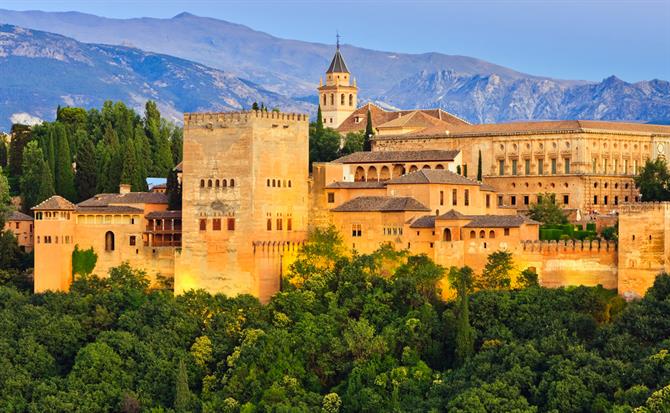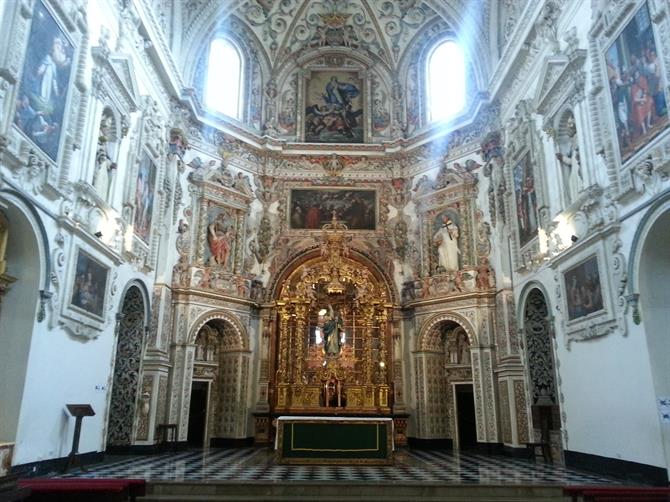When thinking of Spain and its history, the City of three cultures usually refers to Toledo. Toledo is full of historic buildings for the visitor to discover. Just a few examples are a synagogue founded in 1356, la sinagoga del transito, the Mosque of Las Tornerías and the city´s 13th-century Gothic Cathedral.
 However Toledo is not the only place in Spain in which the signs of the three cultures remain. You can see this in other places around the country. Looking to Andalusia Cordoba springs to mind, but also does Granada.
However Toledo is not the only place in Spain in which the signs of the three cultures remain. You can see this in other places around the country. Looking to Andalusia Cordoba springs to mind, but also does Granada.Granada of the Jews
For centuries the city of Granada had a large Jewish population. Thriving right up until 1492 when the Catholic Kings came to power. Unfortunately no synagogue remains in Granada (as in they do in other Spanish cities) however in January 2014 a new Sephardic Museum was opened. El Palacio de los Olvidados. It is close to the Plaza Nueva, in a side street called Cuesta San Inés. The visit includes a tour around the museum and gives the visitor an interesting insight into Granada´s Jewish history.
El Realejo
The district of La Juderia is now known as El Realejo. Guided walks of this neighbourhood are offered by the Museum Sefardi of Granada. You can find this museum located in a typical Realejo style house just behind the Casa de los Tiros museum (this is just off Pavaneras street) This museum gives an insight into the lifestyle of the Granada Jewish community before the Alhambra Decree in 1492.

Islamic History
The Alhambra palace is one of the best examples of Islamic history in Europe, however I am keen to mention a few lesser known examples. La Madraza is located close to the Royal Chapel. This was the Koranic School. It would have been situated almost next to the Main Mosque of Granada in the 14th century (which was previously on the site of Granada Cathedral) La Madraza was the very first university in Granada, it was opened in 1349 by Yusuf I. Later in 1500 it was taken on by the Catholic Kings and converted into Granada Town hall. Nowadays La Madraza is owned by Granada University and is open for visits.
Arab Baths
The Arab baths on Paseo de los tristes is another beautiful example of Ziri architecture. El Bañuelo, dates back to the 11th century. This would have been an important place for the community at the time for bathing and socializing. These bathhouses were prohibited in the 15th century by the Catholic kings and many of them would have been altered at this time to make bakers ovens or other uses for the buildings.
If you want to experience this Arab baths now you can try the Aljibe de San Miguel which recreates these bathhouses. The Aljibe de San Miguel is on Calle de San Miguel Alta 41, Granada. This is a short walk from Bib Rambla square. Here you can unwind in seven pools with different temperature of water and drink mint tea as the people in Granada would have done all those years ago.
Granada Cathedral
The Cathedral of Granada and the Capilla Real are well worth visiting. The Royal Chapel is the resting place of Isabel and Ferdinand. Although they planned this building for their tombs themselves the building took almost twenty years. They died before completion. Their bodies were kept in the San Francisco Monastery in the Alhambra until they could be transferred to the Royal Chapel. Once inside the Royal Chapel downstairs you actually get to see the tombs of the Catholic Kings. In the same area you can also see many other important people in Spain´s history. Granada Cathedral is in the adjoining building and makes up part of the same visit. Construction began in 1526 by Diego de Siloe whose ambitious project is responsible for the grand imposing building we see today.

Baroque Beauty
Another lesser known building to visit in Granada is the Cartuja Monastery. You can get there on the urban bus nº 8 or on the tourist bus stops there too. This baroque monastery was built in 1500´s and monks were there up until 1835. It is one the finest examples of Baroque in Spain. You will see elaborate paintings, plasterwork and beautiful details everywhere you look. Well worth the 4 euros entrance fee. Just outside the Monastery is a small shop which sells Rosary beads made from rose petals. This is an unusual souvenir, the beads always smell of natural rose scent. They also have a version made from jasmine flowers, made by rolling flower petals together by hand, this craft is only done by convent nuns in Spain.
